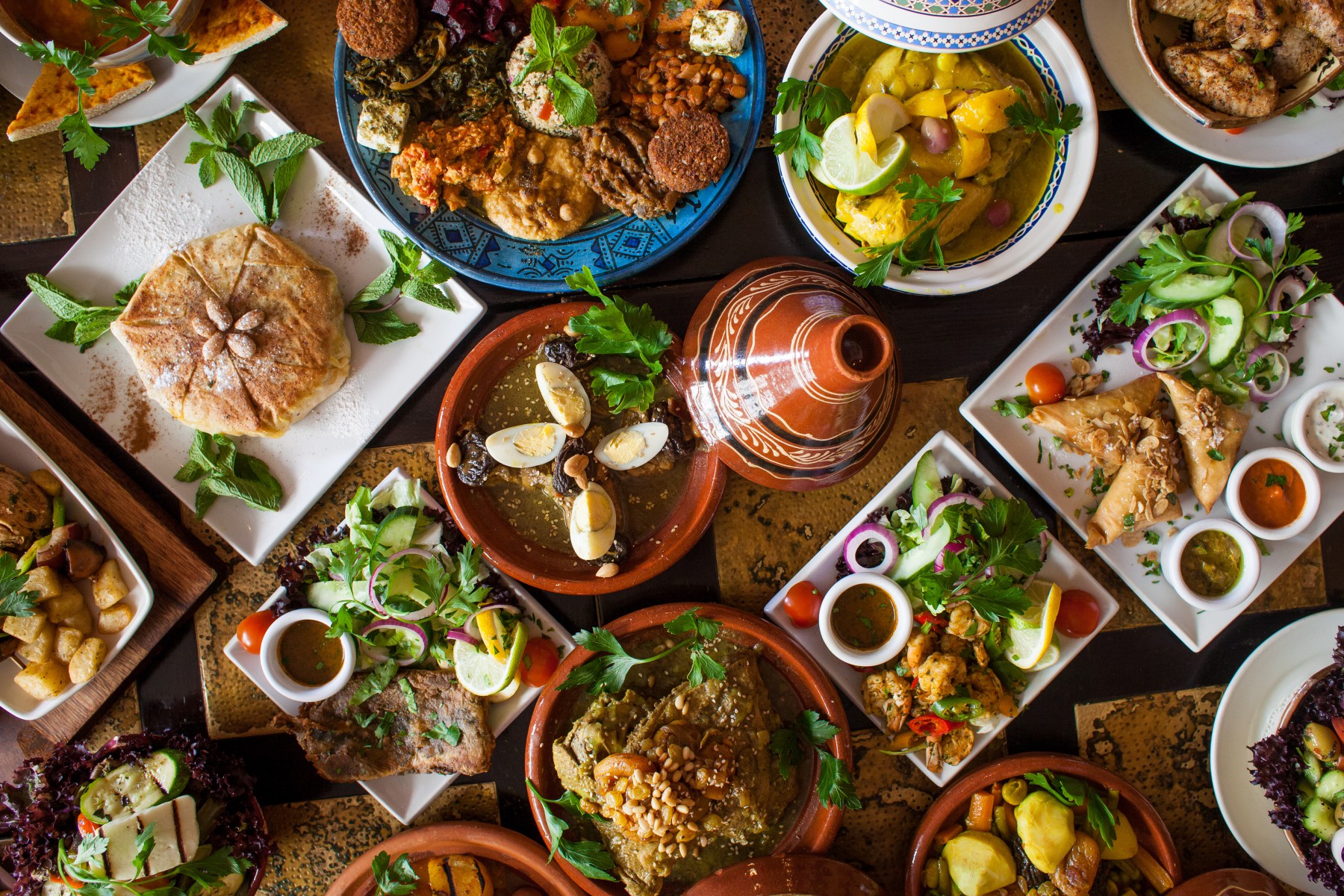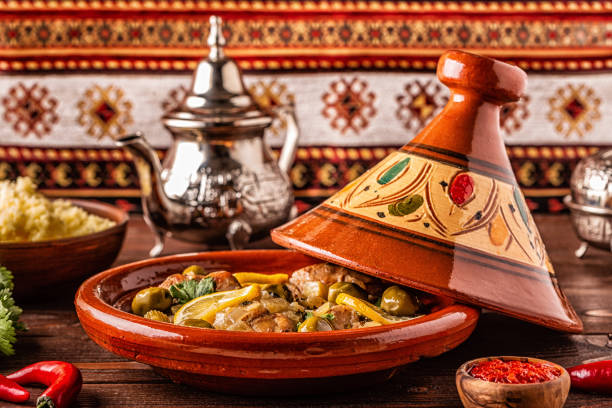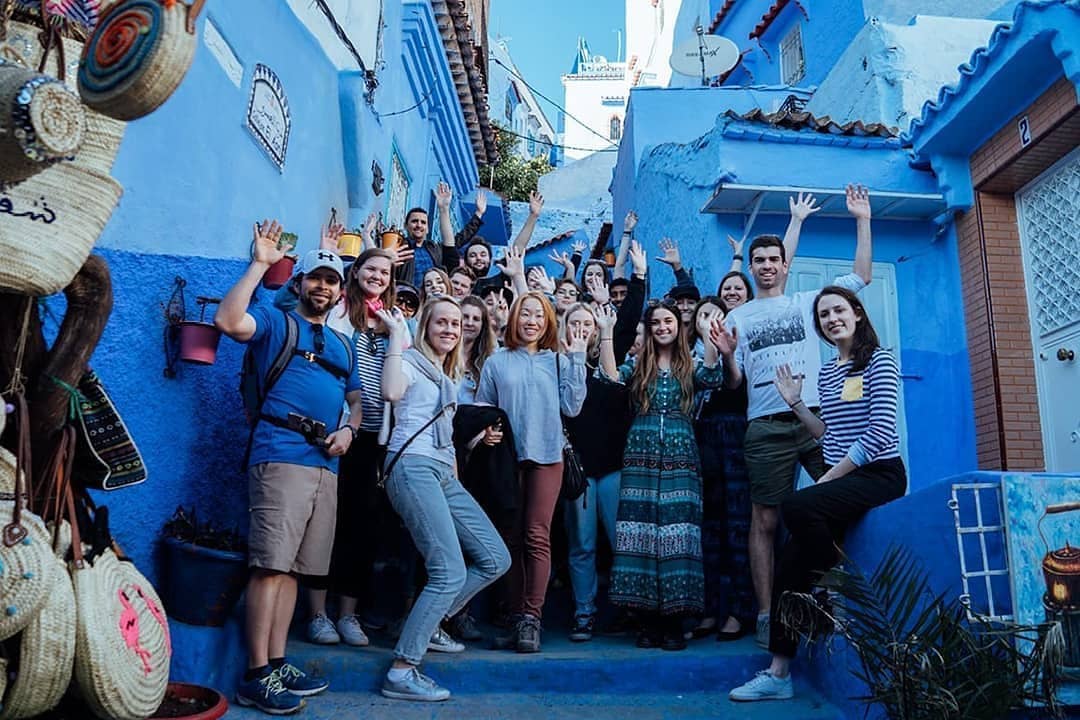Moroccan street foods: What You Can Eat on the Streets
In the heart of Morocco, a culinary tapestry develops, inviting visitors to go on a gastronomic tour that highlights the country’s storied history and lively culture via its food. The smells and sights of its street vendors are irresistible as you walk its streets. Street food in Morocco is more than just a means to an end; it’s a communal event that brings together tourists and natives with a delicious and inexpensive meal. The flavour of freshly baked bread, the crackle of spices, and the smokiness of well cooked meats fill the air.
There are food booths at every corner, and their bright displays and cheerful merchants are guaranteed to put a smile on your face. The unique blend of Mediterranean, Middle Eastern, and African flavours in Moroccan cuisine is a vivid reflection of the country’s diverse geography and history. Although tagines and couscous from Morocco have gained international acclaim, the city’s authentic culinary charm may be found in its smaller restaurants. Those who go here will find a kaleidoscope of tastes and sensations, each one offering a new and exciting experience.
Every location has its own culinary secrets to share, from the bustling souks of Marrakesh to the breezy stalls of Essaouira. Let’s go in and find out what makes Moroccan street cuisine tick by tasting its most beloved dishes and hearing the tales behind them. Moroccan street foods: What You Can Eat on the Streets
Moroccan street foods: What You Can Eat on the Streets
I. Moroccan Vegetarian and Vegan Street Food
Bissara:
In the colder months, many Moroccans enjoy a plate of traditional bissara, a soup prepared from dried fava beans. After being soaked in water for a whole night, dried fava beans are boiled in a mixture of water, garlic, and olive oil until they are delicious. The soup is seasoned with salt, cumin, and paprika, then blended until it achieves a smooth and creamy consistency. Hot, with a drizzle of olive oil, bissara is the standard presentation. Bissara is a traditional Moroccan soup that is both filling and healthy. It’s great with some crusty bread and olives for breakfast, but it works just as well as a main entrée or side dish. Green peas are substituted for the chickpeas in the traditional bissara of the south, resulting in a northern variant known as “bayssar” among foodies.
Lentil Soup:
Another popular dish served on the streets of Morocco is lentil soup, which has lentils simmered in a sauce made from onions, garlic, and tomatoes seasoned with cumin, paprika, and chilli powder. After the sauce has reduced and thickened, the cooked lentils are added and let to simmer for a few minutes in the sauce to combine the flavours. The dish is famous in Morocco as a go-to for lunch and supper since it satisfies hunger without weighing you down.
Harira:
Tomatoes, lentils, chickpeas, and spices come together in a hearty soup called harira. During the holy month of Ramadan, it is a common practise to break the fast with this meal. The soup’s taste comes from a combination of spices including ginger, cinnamon, and turmeric, and it’s sometimes cooked with lamb or beef. Noodles, rice, and potatoes are sometimes included to harira as well.
Maakouda:
Maakouda are a sort of potato cake that are both crunchy and fluffy after being deep fried. Spices and herbs like cumin, paprika, parsley, and cilantro are mixed into mashed potatoes to create the patties. After that, they get a coating of eggs and breadcrumbs before being cooked in oil. Maakouda is a popular snack and starter dish.
Batbout:
Batbout is a traditional Moroccan flatbread that tastes very much like pita. You can create sandwiches out of it, but it also goes well with dinners. A griddle or skillet is used instead of an oven to bake the bread, which is created with flour, yeast, and water. It’s chewy and tender, making it ideal for dunking in sauces.
Msemen:
Msemen is a sort of pancake-like flatbread. The dough is often fried on a griddle and is prepared from flour, semolina, and yeast. Msemen is often eaten with honey, jam, or cheese for breakfast or as a snack in the afternoon. The average price of a msemena is between 30 cents to 70 cents!
Liquid Gold – Argan Oil:
A priceless gem blooms in the sun-kissed soil of Morocco, where the breezes carry legends from the past and the dunes hide the secrets of the ages. The argan tree is a symbol of the strength and perseverance of the Moroccan people, with its twisted trunk and sprawling roots. Argan oil, a veritable liquid treasure, is secreted from its core.
Every molecule of this oil has a tale to tell. The ordeal of waiting patiently for the argan fruit to be processed after being gathered by hand. A tale steeped in custom, as generations-old methods for obtaining this priceless oil are handed down from one generation to the next. And it’s a tale of affection as the Moroccan people take this native gift and incorporate it deeply into their way of life.
The perfume takes you back to a time of shared dinners and laughter in the busy souks or tranquil desert settings. Argan oil, whether drizzled over delicious amlou or incorporated in traditional meals, is more than simply a component; it evokes a feeling. It’s the secret between best friends, the comfort of a grandmother’s hug, and a representation of the love the people of Morocco have for their homeland.
This relationship between man and nature has been developed over many centuries. The essence of Morocco, a place of beauty, history, and unyielding character, may be found in every glistening drop of Argan oil.
The Spice Trail
A timeless story may be found in the heart of Morocco, between the towering Atlas Mountains and the shifting sands of the desert. It’s a story that floats on the winds of the busy medinas and is whispered in the stillness of the Saharan evenings. The history of the Spice Route through Morocco is told here.
Cumin, saffron, paprika, and the mythical Ras el Hanout are the story threads that run through each and every meal in this enchanted kingdom. To the Moroccans, these spices are more than just a condiment; they are life itself. These are the tales of old caravans on the Silk Road, of traders haggling in the cool of the date palms, and of grandmothers sharing family recipes over the warmth of the fireplace.
A sprinkle of cumin in a tagine isn’t simply a flavour; it’s the sound of kids laughing as they run about the kasbahs. Saffron is a delicate spice that is hand-picked before dawn and symbolises the hopes of farmers for a successful crop. Paprika’s vibrant colour captures the exuberance of Moroccan dancers as they swirl their skirts to the beat. And the symphony of flavours that is Ras el Hanout, the gem of Moroccan spices, perfectly encapsulates the essence of the country itself.
Exploring the world via the flavour of these spices. The trip involves winding past colourful markets where the air is heavy with the scent of freshly ground spices. Travel to peaceful desert enclaves where you can hear nothing except the wind in the palm trees and the occasional call to prayer. It’s a trip full with experiences that will stay with you long after the final mouthful is gone.
In addition to being a culinary journey, the Moroccan Spice Route is also an emotional and spiritual pilgrimage. It captures the spirit of Morocco in every aromatic sprinkle and mouthwatering morsel.
II. Moroccan Street Food for Meat Lovers
Kefta:
Grilled skewers of ground beef are known as kefta in Morocco. Beef or lamb is used in the preparation, and a variety of spices, including as cumin, paprika, and coriander, are often thrown into the mix. The skewers often get their smokey, charred flavour by being roasted over an open flame. Include some Kefta on your list of Moroccan street cuisine to try if you’re a meat eater.
Briouat:
Briouat is a savoury pastry that may be filled with anything from ground beef and cheese to veggies and cheese. Deep-frying the pastry makes it crisp and golden. The dough is folded into a triangle or square. It’s often eaten as a light meal before a meal. You may get one of these at any one of the many food stands along the streets of Morocco.
Caliente:
Caliente is one of the harder dishes to get if you aren’t in the north of the nation, so if you’re ever up there, you should definitely give it a try! A savoury pie that is often served by the slice and made using chickpea flour, oil, eggs, spices, pepper, and cheese. More than that, it’s extremely…warm!
Fans of Seafood Other options to Fast Food in Morocco
Babbouche (snail soup):
“Babbouche” or “Ghlal” is one of the most well-known street meals in Morocco. There are more than 15 different herbs and spices in this stew (what do you think, Colonel Sanders?). Diners use toothpicks or needles to extract the soft flesh from the shells of snails served in bowls. The dish is said to have been created in Marrakesh but is currently sold at food kiosks around the nation after dark. One of the most interesting things about Moroccan street cuisine is the snails.
Grilled Sardines (and other seafood!):
Even though fish may not be the first item that comes to mind when thinking of street cuisine, sardine carts can be found in every coastal city in Morocco. Grilled or deep-fried sardines marinated in a variety of sauces called “chermoula” are on the menu tonight. They are an excellent grab-and-go snack!
Fresh Oysters:
You may almost certainly find a stand selling freshly shucked oysters everywhere you go in any of Morocco’s coastal towns. These are often harvested the same day they will be consumed and eaten raw with a squeeze of lemon. Oualidia and Dahkla oysters are famous all around the nation.
III. Moroccan desserts for street vendors
Nougat:
You may get Moroccan nougat, or lhalwa, in all sorts of colorful and interesting varieties! The candy is created with sugar, egg whites, and various nuts and seeds; peanuts, almonds, sesame seeds, and walnuts being the most common. Pyramids of coloured nougat may be found on food booths as you make your way through the narrow streets of the country’s many medinas. Any sweet craving will be satisfied by the nougat’s sweet, nutty flavour and rich, caramel-like texture.
Chebakia:
Traditional Ramadan food in Morocco includes the sweet and crunchy pastry known as chebakia. It’s produced by forming a dough out of flour, sesame seeds, anise seeds, and cinnamon (though other recipes exist), deep-frying it till it’s golden brown, and then dipping it in a hot honey syrup flavored with orange blossom water and finishing it off with more sesame seeds. Chebakia, the end product, is a fragrant, sweet, and crispy-on-the-outside-chewy-on-the-inside pastry that may be eaten as a delicious snack at any time of day or year.
Fresh fruits and juice:
All around the country, you may find stands selling freshly picked fruits. Prickly pear is a speciality of Morocco, and you should stop at one of these places that makes freshly squeezed juices to taste some while you’re there.
IV. But… Is Moroccan street foods safe?
Naturally, it is preferable to keep as safe as possible and minimise unnecessary danger while travelling, but particularly in places with dramatically different culinary customs. Eating where the locals eat is a solid rule of thumb. When local Moroccans queue at a stand, it’s a good sign that the food is clean and freshly prepared. Food that has been prepared right in front of you or has been laying out for no more than two to three hours is your best chance from a safety and flavour perspective. Unless they are loaded with minced lamb or cheese, baked goods don’t last as long as they otherwise would. Drinks and foods that are diluted or rinsed with water pose a greater health risk, but many tourists say they’ve had no problems with the freshly squeezed orange juice sold in the Djemma el Fna area in Marrakech first thing in the morning. As in any Western nation, there is some danger in consuming boiling water (for use in beverages like tea) or food that has been cooked in it.
FAQs
- What is a tagine, and why is it famous in Moroccan cuisine?
A tagine is a traditional Moroccan cooking vessel used to prepare slow-cooked dishes. It’s famous for its ability to infuse flavors and create tender, aromatic meals.
- Are Morocco cooking class tours suitable for beginners in cooking?
Absolutely! These tours cater to all levels of cooking expertise. Whether you’re a novice or an experienced chef, you’ll find something to learn and enjoy.
- What is the best time of year to visit Morocco for cooking class tours?
Spring and fall are considered the best seasons for a pleasant culinary journey in Morocco. The weather is mild, and markets are bustling with fresh produce.
- Can I customize my Morocco cooking class tour itinerary?
Many tour operators like « MOROCCO TRAVEL 4X4 » offer customizable itineraries to suit your preferences. You can tailor your experience to focus on specific dishes or cultural aspects.
- Is it safe for solo travelers to join Morocco cooking class tours?
Morocco is generally safe for solo travelers. However, it’s advisable to book with reputable tour operators like MOROCCO TRAVEL 4X4 and exercise common travel precautions.














